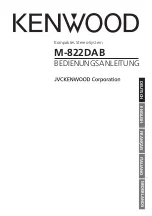
Automatic Route Selection
Automatic Route Selection (ARS) allows the system to automatically select the least costly line group
available to a station to route a call. The system modifies the dialed number, if needed, to match the
selected line group. Additionally, ARS provides the costing information for the dialed call that is
reported by the station message detail accounting feature. ARS makes routing decisions (which lines to
route a call over, if and how to modify a number, and costing information) based entirely upon the
programming of the system.
When the ARS feature is active, the user selects ARS by dialing 9. Because direct line selection by the
user bypasses the ARS route selection feature, the programmer normally does not give stations direct line
appearance when ARS is part of the system operation.
The ARS feature can operate with the toll restriction feature or independently from it; however, both
features use the same entry table for programming. The programmer enables or disables automatic route
selection on a system-wide basis. A defaulted system has ARS disabled.
The programmer must program a number and the proper routing information before the system can
perform ARS on that number when it is dialed. The programmer generally arranges routing from the least
costly routing method to the most costly routing method. The cost of the route is determined by the line
group over which the call is routed.
If a station does not have access, because of programmed restrictions, to a route that the ARS selects for
it, the system denies the dialing and causes an error tone to sound at the station. If the station does have
access, ARS routes calls from that station based on the routing information. If the call can not be made
on the line group first selected by the routing, ARS will try the next route. Once again the route access is
tested. This process is repeated, up to a maximum of six times. Each route is programmed from least to
most costly. The more costly the route, the higher the access level needed to access it and the greater the
chance that the station will be denied access. If ARS selects a more costly route because the least costly
one is busy, a station user receives a warning tone when a call is attempted. Since this tone indicates that
a more expensive line group was chosen by the system, the station user should hang up and try again later.
This warning tone feature is enabled through programming.
Before automatic route selection can operate efficiently in a cost saving manner, the programmer must
group similar lines together into line groups.
Each route in every route table contains costing information. The costing information includes two
programmable tiers of costing and a programmable surcharge amount. Even if a call is not routed through
ARS, (if the station user selects the line), the system still accesses this costing information to cost the call.
The programmer can arrange the automatic route selection feature so that it modifies the dialed number
by adding or deleting digits until the number better fits the dialing needs of the selected route. Doing this
results in situations such as the following example:
Assume a station user dials 12025551212 (Washington D.C. area), and further assume that the system has
an FX line to the Washington D.C. area and ARS will route the call over it. ARS will delete the 1202
prefix and only dial 5551212 because the FX line does not require the prefix numbers to complete the
call. Field maximum: 20 digits.
You can program the system for any one of three different dial tones that you will hear whenever you
enter the ARS access code. The ARS dial tone choices are:
— Dial Tone 1 - steady intercom dial tone (dual tones of 480 Hz + 620 Hz),
— Dial Tone 2 - same as dial tone 1 only preceded by three short tones (200 ms on, 200 ms off),
— Dial Tone 3 - steady simulated central office ring back tone (dual tones of 440 Hz + 480 Hz).
GCA40–130
DXP Plus General Description
52 – Understanding The Features
Содержание DXP Plus Series
Страница 1: ...Digital Communications System R ...
Страница 363: ...Automatic Call Distributor Technical Manual R QuickQ DXP ...
Страница 424: ...Automatic Call Distributor System Manager s Guide R QuickQ DXP ...
Страница 500: ...Wrap up Time 1 6 Wrapping Up A Call 4 3 Z Zoom Box A 2 GCA70 271 Index I 3 ...
Страница 628: ...Interconnecting The VMI X Installing And Programming For ExecuMail IMI89 206 Installing And Programming For ExecuMail 5 ...
Страница 677: ...Connecting The Equipment Installing And Programming The OPX X IMI89 209 Installing The OPX X 7 ...
Страница 728: ...DP I I I I and FX Series Digital Communications Systems Understanding The Visual Man Machine Interface COMDlA ...
Страница 1112: ...9 08 8 90 1 13 4 78 3 94 UNIS029 TAB003 PLS page 6 GCA40 130 DXP Plus General Description 11B Telephone Features ...
















































